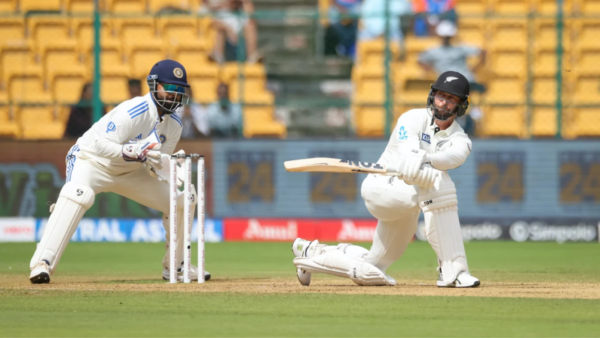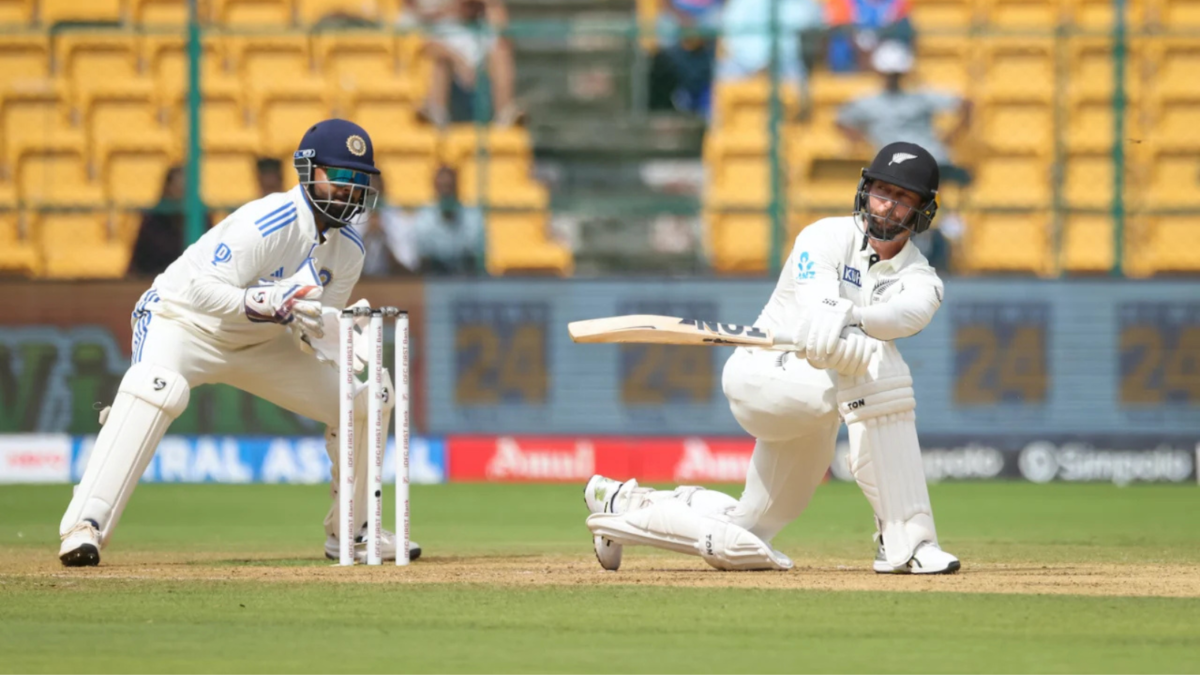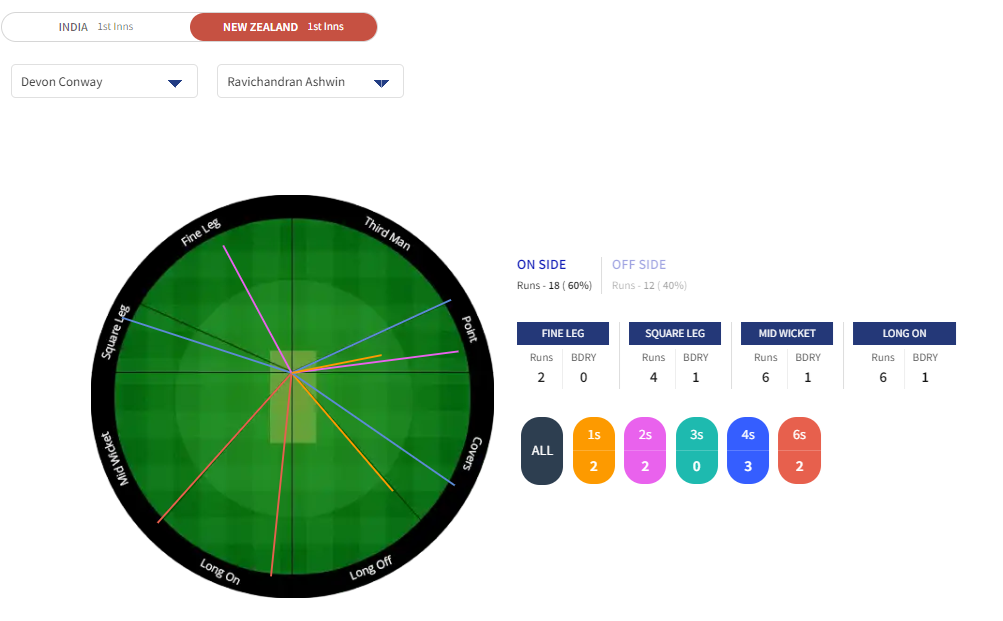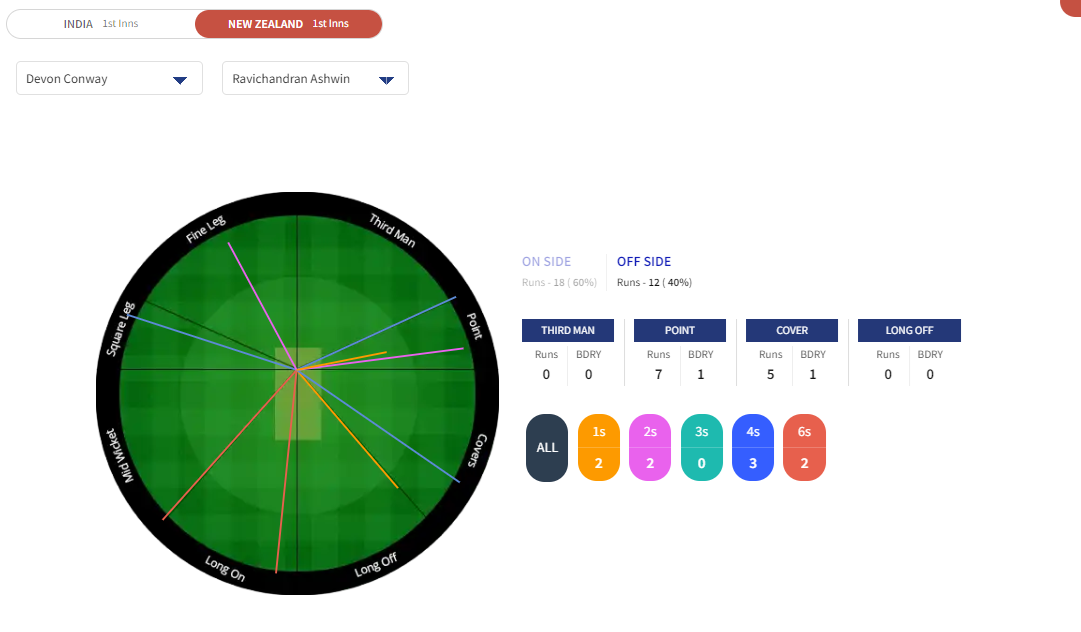
There was a method to Conway’s attack; he chose his balls precisely and placed them perfectly.

Devon Conway vs Ravichandran Ashwin? That’s a fascinating battle. Conway is a solid player of spin, capable of playing all types of sweeps and lofted shots in the ‘V’. Meanwhile, Ashwin is a wizard against southpaws, an average of 19.44.
On just his second delivery against Ashwin, Conway attempted an on-the-up drive and got two runs. Two balls later, he brought a reverse sweep, and while he didn’t get any runs, the intentions were clear. It was an indication of what to expect from Conway.
ALSO READ: Rohit Sharma admits to massive blunder in Bengaluru Test against New Zealand
But Ashwin is a smart operator. In the next over, he varied his pace brilliantly by first bowling a quickish slider at 95.1 km/h before bringing his pace down to 88.9 km/h, and Conway was clearly uncomfortable on both occasions. In reply, the batter stepped down off a full-length delivery on the next ball for a huge maximum.
Conway first played a conventional sweep, and on the next delivery, a reverse sweep in the next over to unsettle Ashwin. The track didn’t have much for spinners, but to put Ashwin under pressure is never easy. He is too masterful to depend on the pitch for taking wickets, especially against left-handers.
However, Conway remained as unpredictable as possible with his shot selection and didn’t depend on a particular shot for his runs. Once he decided to run down the track, he played his shot aerially, even if he didn’t get to the pitch of the ball. His bat swing was enough free-flowing to sail the boundary over the ropes, even when the bowler pulled his lengths back.
Conway also had methods against Kuldeep Yadav, who was played to stop a batter like him. He didn’t attempt those funky sweeps and reverse sweeps but used his feet brilliantly against the wrist spinner. He came down the track off fuller-length deliveries to get to the pitch of the ball and used the depth of the crease to bring those strong wrists and pierce the gaps.
Conway hit with the line of the ball and ensured not to get beaten by the trajectory at any stage. While he didn’t face Ravindra Jadeja much, he was largely comfortable against him, barring a couple of balls that turned off the rough. Overall, he was in control mostly and negated the biggest threat – spinners.
There was a method to Conway’s attack; he chose his balls precisely and placed them perfectly. He showed that dead batting won’t work, even if the track doesn’t have too much for spinners. Eventually, he perished while reverse-sweeping a very full delivery, but he was in control for most of the innings.
Tom Latham wasn’t proactive enough to put away looseners and got out after a tepid knock. Will Young did well during his stay, especially in the initial part of the innings, but his shot selection became predictable after a stage. That wasn’t the case with Conway.
He has set the tone for the series, showing a way to counter India’s biggest strength at home. The pitches for India’s home games have been true, especially from the England series earlier in the year. So, spinners need to target specific areas and be more consistent with their plans.
In reply, the opponent batters can be proactive and not let them get into the rhythm like Conway did to Ashwin in the first dig. Ben Duckett too played a magnificent knock in Rajkot earlier in the year. He played his shots all around and found ways to score runs.
He employed those conventional and unconventional sweeps and didn’t hesitate sweeping spinners from the stump line, either. He could do it because the tracks didn’t exaggeratingly favour tweakers, even if he and his team felt it at times. Similarly, Ollie Pope was proactive and made every scoring opportunity count on his historic knock in Hyderabad.
The difference between their method and Conway’s method was about luck and skill. Duckett and others were massively predictable with their shot selections and gave more chances. They survived on luck, but the common thing was not missing any run-scoring opportunity and taking risks.
They didn’t mind playing premeditated sweeps or going for slogs even when they had just survived. That was not the case with Conway. He kept out good deliveries and pounced on every loose one.


Maybe Conway is more skilled to do that, unlike those English batters. He read variations from the hand and managed his footwork well. And the only delivery he failed to judge properly resulted in his dismissal.
But there will be times when he will get away with false shots like Duckett and his teammates did. That’s where Conway’s method will be effective. The surfaces have been generous to those intending to score and have not gone extreme with their approach.
These are not the tracks where batters need more luck than skills to survive. The spinners must work for every dismissal, unlike bowling on dustbowls and getting away with poor deliveries. If a batter is skilled, he will get his rewards.
ALSO READ: India’s Lowest Total in Test Matches
Even if it isn’t fetching success, that’s the only way forward. Dead batting or being ultra-attacking will never bother Ashwin or other Indian spinners. In fact, that will make them more threatening.
New Zealand have a few quality spin players. That doesn’t mean Indian spinners won’t have plans to tackle them. But if other Kiwi batters take a clue from Conway’s batting on what was technically the first day, India will have their task cut out for the remainder of the rubber.
For more updates, follow CricXtasy on Facebook, Instagram, Twitter, Telegram, and YouTube.